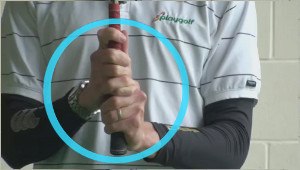
The Interlocking Grip
The interlocking grip is a common technique used by golfers to hold the club securely and maintain control during the swing. It involves interlocking the little finger of the trailing hand (right hand for right-handed golfers) with the index finger of the lead hand (left hand for right-handed golfers). This grip provides a unified connection between both hands, promoting a more cohesive swing motion.
Benefits of the interlocking grip:
- Improved control: The interlocking grip helps golfers maintain a stable position of the club throughout the swing, resulting in enhanced control over the direction and trajectory of the ball.
- Increased power: By linking the hands together, the interlocking grip creates a more unified and connected action, allowing for a more powerful transfer of energy from the body to the clubhead.
- Reduced hand tension: The interlocking grip encourages a relaxed grip pressure, minimizing tension in the hands and arms. This helps golfers maintain a smoother swing and prevent unwanted muscle tightness.
- Consistency: Once established, the interlocking grip can promote a consistent grip position and hand placement, leading to more consistent ball striking.
Steps to achieve the interlocking grip:
- Place the club handle in the fingers of the lead hand (left hand for right-handed golfers) and create a “V” shape between the thumb and index finger. The “V” should point towards your trail (right) shoulder.
- Bring the trailing hand (right hand for right-handed golfers) to the club handle, placing the little finger against the index finger of the lead hand.
- Wrap the little finger of the trail hand around the club handle and secure it by placing the index finger of the lead hand over the top, creating a firm connection between both hands.
- Ensure a relaxed grip pressure while maintaining control of the club.
Additional tips:
- Practice: Experiment and practice with the interlocking grip to find a comfortable hand position and grip pressure that works best for you.
- Consistency: Use the interlocking grip consistently throughout your rounds and practice sessions to develop muscle memory and establish a repeatable swing.
- Adjustments: Depending on your hand size and preferences, you can make slight adjustments to the placement of your fingers within the interlocking grip. Find what feels most natural and effective for your swing.
- Seek professional guidance: If you're new to golf or struggling with your grip, consider seeking advice from a golf instructor who can provide personalized guidance and help you optimize your grip.
The interlocking grip is a widely used technique among professional and amateur golfers alike. While it may take some time and practice to become comfortable with this grip, it can significantly improve your control, power, and consistency, ultimately enhancing your overall golfing performance.





